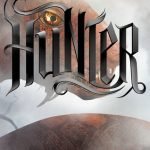Ending Fear by Deanna Fugett is a well-written dystopian\science fiction novel for middle grade set in a world of “haves” and “have nots.” It was recently published by Love2ReadLove2Write Publishing (L2L2) on September 23.
SYNOPSIS (from Amazon)
Fourteen-year-old Fear learns she was a parachute baby, dumped over the edge of the Gliding Lands as an infant. Fascinated by the floating cities in the sky before, now she’s desperate for answers.
But a slave isn’t likely to get those answers.
When her abusive Downer family throws her from their hovel, Fear takes refuge with a family who shows her love for the first time. Surely they can’t be trusted. Years of abuse and molestation has taught her that.
Then her brother discovers where she’s hiding and tries to kidnap her. Fear will never let him touch her again. Her new family conceals her at the Fallen, a ranch that hides parachute babies from the Uppers who discarded them.
Just as she’s beginning to embrace yet another home, Fear’s new little sister, Happy, is kidnapped and taken to the Uppers’ temple harem. Fear must go against her namesake, find a working hoverpod, and journey to the dreaded Gliding Lands before the little girl’s innocence is ripped from her forever.
Can she save Happy in time?
And will she find answers to the burning question of why anyone would throw her away?
PROS
- The first-person point of view is extremely well written and engrossing. Ms. Fugett shows excellent command of her writing craft and manages an interesting story.
- The story world of “Downers” and “Uppers” is thought-provoking for varying ages and reading levels. The concept of “haves” and “have nots” isn’t new to literature, but the story offers enough of a twist to distinguish it from other dystopian novels.
- The idea of a toxic foster family is presented in a straight-forward manner without being graphic and frightening to younger readers.
- The portrayal of a loving family existing outside of conventional two-parent family systems is commendable.
CONS
- This book will not openly engage male readers. That doesn’t make the book awful, but I was disappointed that the concepts of rape and abuse from the victim’s side weren’t presented in ways that would draw in male readers. Opportunities to present such ideas in engaging ways is always welcome, but broaching it to male readers is an important opportunity. Since Ms. Fugett is such a good writer, my hope is that she will consider broadening her content and her appeal across gender lines.
- Since I do enjoy speculative fiction, I was disappointed that the setting wasn’t promoted enough, and that it took half of the book before the reader is given a substantive glimpse of the story world. That is one of the drawbacks to an extremely well-written first-person viewpoint. Giving the reader a much clearer view of the world in a way that is natural to the unfolding of the story is difficult.
- The biggest of my objections is the way that the topic of abuse and rape are handled. Ms. Fugett wasn’t graphic or disrespectful by any means. The topics are difficult at best, but also important. There is no reason that the topics can’t be broached in an age-appropriate story. Since Fear is only fourteen, I’m not completely sure the topic was dealt with as well as it could. I don’t wish to imply that Ending Fear promotes anything inappropriate or is graphic, but I was hoping for more substantive material. I will leave the final conclusion to readers.
There is a companion coloring book available. I am not one to color pictures, but if you are, please feel free to click on the “COLORING BOOK” if you are.
CONCLUSION
The book is well-written and interesting, but will probably only appeal to female readers. I do wish the title character Fear would have been written a little older so that talking about abuse and rape could have been given much more context and greater spotlight. I recommend parents read this book first to decide if their children are at an age where they are ready for the content and it’s implications.









